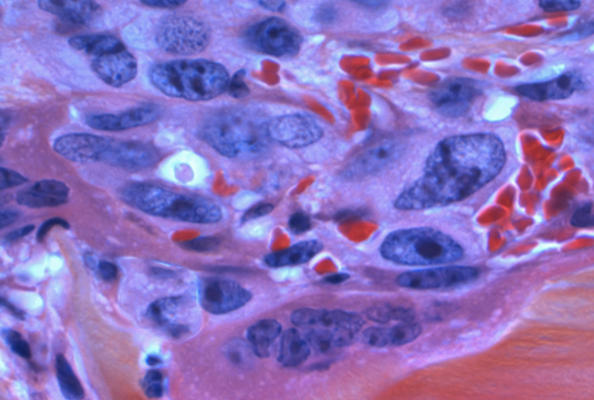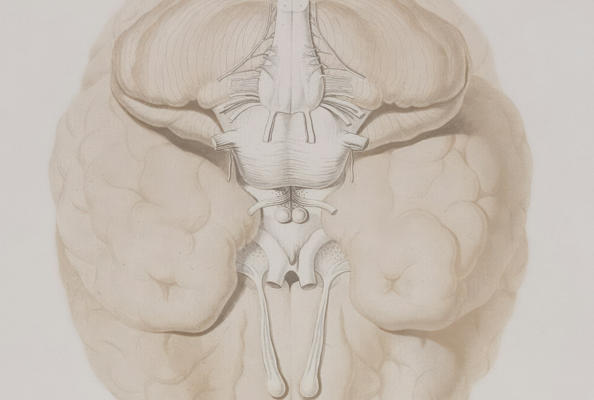
- Details
-
Also available in:

- Parent Category: Knowledge Base
- Hits: 122
The tumor suppressor protein p16INK4a (p16) plays a critical role in cell cycle regulation by inhibiting CDK4/6 kinase activity, thereby preventing abnormal cell proliferation and acting as a natural "cancer guardian." However, in many cancers, the p16 gene is frequently inactivated by mutations. Missense mutations, in particular, lead to protein structural instability, making p16 prone to degradation or misfolding, and consequently, loss of its tumor-suppressive function. It is estimated that over half of familial melanomas and many sporadic tumors harbor p16 mutations. Traditional gene therapies or small-molecule drugs struggle to directly "fix" such structurally unstable proteins. Therefore, finding molecular chaperones that can stabilize mutant p16 has emerged as a new therapeutic direction.

- Details
-
Also available in:

- Parent Category: Knowledge Base
- Hits: 143
With the groundbreaking progress of immune checkpoint inhibitors (ICIs) in human cancer therapy, the demand for similar treatments in companion animals, such as dogs, is increasingly growing. Spontaneous canine tumors share high similarities with human tumors in terms of immune microenvironment, genetic background, and clinical progression, making them ideal translational medicine models. However, the market still lacks efficient and specific immunotherapeutic drugs targeting canine PD-L1. Most existing antibodies are derived from murine sources or are humanized, suffering from issues like strong immunogenicity, high production costs, and poor tissue penetration. Therefore, developing a novel canine PD-L1-targeting inhibitor based on Nanobodies (Nbs) holds promise not only for advancing veterinary oncology but also for providing valuable references for human immunotherapy research.

- Details
-
Also available in:

- Parent Category: Knowledge Base
- Hits: 183
Herpes Simplex Virus (HSV) is primarily categorized into HSV-1 and HSV-2. The former often causes oral herpes, while the latter is a major cause of genital herpes. Both viruses can disseminate to other organs or lead to severe, potentially fatal complications, including herpes keratitis, herpes encephalitis, neonatal herpes, among others. Existing therapeutics like acyclovir can only inhibit viral replication but cannot prevent latent infection or recurrence. Furthermore, as the viral glycoprotein B (gB) undergoes conformational changes, the number of drug-resistant viral strains continues to rise annually.

- Details
-
Also available in:

- Parent Category: Knowledge Base
- Hits: 166
The lack of effective treatments for brain disorders related to NMDA receptor hypofunction, such as schizophrenia and GRIN1-related disorders, has long been a major challenge in the medical field. Traditional small-molecule drugs often lack selectivity and exhibit significant side effects, while antibody-based therapies struggle to cross the blood-brain barrier (BBB), limiting their efficacy.To address this clinical need, a collaborative effort involving the Institute of Functional Genomics in Montpellier (France), the Department of Pharmacology and Toxicology at the University of Toronto (Canada), and the Faculty of Health, Medicine, and Technology at Paris-Saclay University (France) has developed a bivalent bispecific nanobody named DN13-DN1. Administered via intraperitoneal (IP) injection, this nanobody successfully crosses the BBB, specifically binds to and enhances the activity of the mGlu2 receptor. In two mouse models of NMDA receptor hypofunction—neonatal PCP-induced (mimicking schizophrenia) and GluN1-KD genetic (mimicking GRIN1 disorder)—DN13-DN1 significantly improved cognitive deficits and sensorimotor gating impairments. Subchronic treatment demonstrated stable therapeutic effects without noticeable side effects, outperforming both traditional small-molecule drugs and IgG-class antibodies. This study was published in the leading academic journal Nature. Let’s delve into the details.





